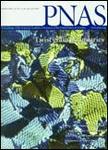版权所有:内蒙古大学图书馆 技术提供:维普资讯• 智图
内蒙古自治区呼和浩特市赛罕区大学西街235号 邮编: 010021

作者机构:Merck Res Labs Dept Human Genet West Point PA 19486 USA
出 版 物:《PROCEEDINGS OF THE NATIONAL ACADEMY OF SCIENCES OF THE UNITED STATES OF AMERICA》 (美国国家科学院汇刊)
年 卷 期:1999年第96卷第26期
页 面:15149-15154页
核心收录:
主 题:选择性剪接 载体蛋白质类/生物合成 克隆 分子 基因表达调控 猕猴 分子序列数据 神经胶质/代谢 孤儿核受体 眼色素上皮/代谢 启动区 遗传 蛋白质结合 受体 胞质和核/遗传学 受体 胞质和核/代谢 视网膜/代谢 序列分析 DNA 组织分布 转录因子 转染 动物 人类 小鼠
摘 要:In an effort to identify nuclear receptors important in retinal disease, we screened a retina cDNA library for nuclear receptors. Here we describe the identification of a retina-specific nuclear receptor (RNR) from both human and mouse. Human RNR is a splice variant of the recently published photoreceptor cell-specific nuclear receptor [Kobayashi, M., Takezawa, S., Hara, K,, Yu, R. T,, Umesono, Y,, Agata, K., Taniwaki, M., Yasuda, K, & Umesono, K. (1999) Proc. Natl. Acad. Sci. USA 96, 4814-4819] whereas the mouse RNR is a mouse ortholog. Northern blot and reverse transcription-PCR analyses of human mRNA samples demonstrate that RNR is expressed exclusively in the retina, with transcripts of approximate to 7.5 kb, approximate to 3.0 kb, and approximate to 2.3 kb by Northern blot analysis. In situ hybridization with multiple probes on both primate and mouse eye sections demonstrates that RNR is expressed in the retinal pigment epithelium and in Muller glial cells. By using the Gal4 chimeric receptor/reporter cotransfection system, the ligand binding domain of RNR was found to repress transcriptional activity in the absence of exogenous ligand, Gel mobility shift assays revealed that RNR can interact with the promoter of the cellular retinaldehyde binding protein gene in the presence of retinoic acid receptor (RAR) and/or retinoid X receptor (RXR), These data raise the possibility that RNR acts to regulate the visual cycle through its interaction with cellular retinaldehyde binding protein and therefore may be a target for retinal diseases such as retinitis pigmentosa and age-related macular degeneration.